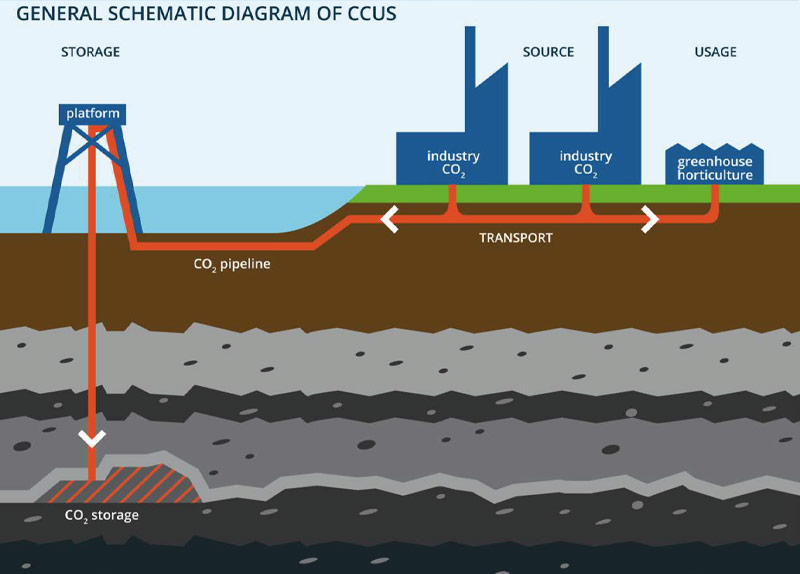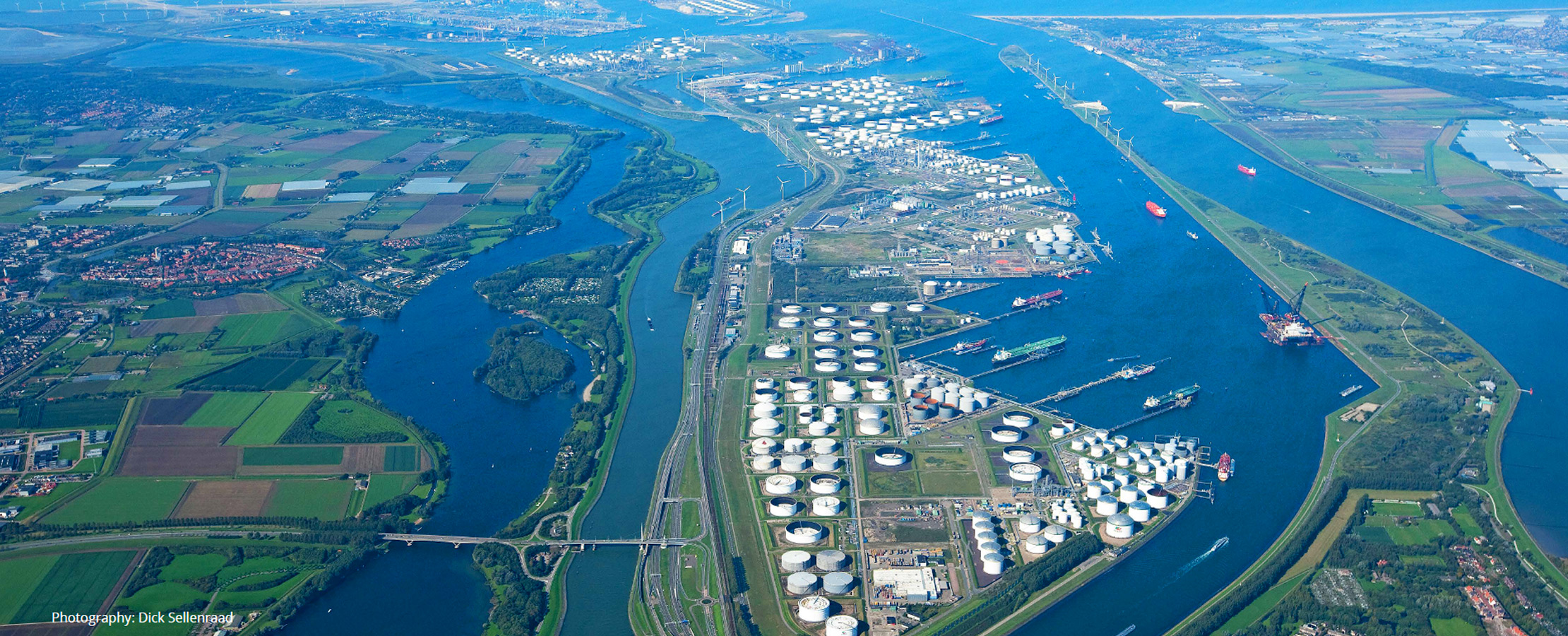Port cities emerge as ideal labs for green tech acceleration
Port cities are emerging as accelerators for green technologies, in particular for capturing carbon-laden emissions for natural underground storage, according to experts at the International Energy Forum (IEF).
Home to most of the world's population and most of the pollution, port cities and their industrial clusters are expected to bear the brunt of global warming and sea level rises. Applying green ideas is essential not only to meet net-zero goals, but to strengthen supply chains that form the foundation of global trade, experts said.
"Port cities and the industries they harbor can drive carbon circularity in energy intensive industries," said H.E. Joseph McMonigle, Secretary General of the IEF.
In the Organization for Economic Co-operation and Development (OECD), port cities and their hinterlands are responsible for 64 percent of investment in mitigating climate challenges such as pollution and biodiversity loss, according to the Coalition for Urban Transitions.
"Anchoring new climate solutions in major ports, and the industry clusters they host, offers many opportunities and economies of scale," said Christof Van Agt, Director of Dialogue at the IEF.
Major ports are natural accelerators for achieving net-zero carbon gas emissions. They can deploy large-scale applications of carbon capture, utilization and storage (CCUS), hydrogen, as well as other abatement solutions like small-scale LNG technologies and stricter fuel standards, he added.
The shipping and maritime industry oversees 80 percent of global trade transportation, and the International Maritime Organization has set a target of reducing greenhouse gas emissions by 70 percent by 2050. Toward that goal, ports have been significantly cutting their carbon footprints from shipping. For example, the North American ports of Vancouver, Seattle and Tacoma have committed to phasing out emissions from seaport-related activities by 2050.
Four port-related organizations – the American Association of Port Authorities; the European Sea Ports Organization; AIVP–The Worldwide Network of Port Cities; and the World Association for Waterborne Transport Infrastructure – have signed on as founding partners of the World Ports Sustainability Program. It is focused on implementing the United Nations' sustainability goals by reducing emissions and building resilience.
These new investments require ports to be more innovative in long-term planning and in rethinking their business models. With everyone searching for operational sustainability, port administrators need to ask questions about new technology infrastructure requirements and how they fit into port operations. Examples of recent port-related efforts are numerous.
In the Netherlands, Gasunie and EBN – both state-owned enterprises – are working with two ports to implement full-scale CCUS projects known as Porthos and Athos. The Athos project, which is a joint initiative between Gasunie, EBN, Tata Steel and the Port of Amsterdam, would be a basic capture and transport infrastructure in the North Sea Canal area. Porthos is a project in the Port of Rotterdam where CO2 would be transported and stored in empty gas fields beneath the North Sea.

In Abu Dhabi, the Abu Dhabi National Oil Company's (ADNOC) Al Reyadah facility in the Mussafah industrial and port area has the capacity to capture 800,000 tonnes of CO2 annually. The world's first CO2 facility for the iron and steel industry and the first CCUS plant in the Middle East, Al Reyadah could be indispensable for ADNOC in meeting its 2030 sustainability goals.
In the Port of Antwerp, several large companies have signed a collaboration agreement for a CCUS project. Announced in December 2020, Air Liquide, BASF, Borealis, INEOS, ExxonMobil, Fluxys, Total and the port are studying the economic and technical feasibility. As a top chemicals and energy cluster in Europe, Antwerp is a prime location to encourage the use of CO2-reduction technologies. The proposed CCUS facilities would be open-access and available to the port's industrial community.
Environmental projects at port cities go beyond just CCUS. In the United States and the European Union, ports have used technologies such as Selective Catalytic Reduction (SCR) for diesel engines, scrubbers, LNG and shore power to reduce transport and industry emissions. Many ports are also adopting low-emissions zones and the International Maritime Organization 2020 (IMO2020) sulphur oxide-reduction rules for diesel.
In December 2020, the Port of Southampton – one of the United Kingdom's busiest and largest ports – confirmed that it was exploring the construction of a hydrogen super-hub to decarbonize local industry and heavy transport emissions, creating a major center for hydrogen production and distribution.
If Southampton, which emits around 2.6 million tonnes of CO2 from industrial activities, could decarbonize highly polluting activities through hydrogen production, the result would be cleaner air, an increase in port-area jobs and new economic opportunities. UK policies support projects like this one by incentivizing private sector investment in technologies to lower transport and industry emissions.
The Sohar Port & Free Zone in Oman is planning a facility to build hydrogen electrolyzers to create carbon-free hydrogen from low-cost solar power. The port, which is 50 percent owned by the Port of Rotterdam, would store the hydrogen for delivery later to industrial tenants and other customers.
Announced in April 2021, a partnership between the Port of Townsville in Queensland, Australia, Origin Energy and Japan's Kawasaki Heavy Industries is studying infrastructure investments, commercial scalability and safety requirements for generation of green hydrogen. This project could also produce a dynamic income stream for the deep-water port that would offset economic fluctuations in the shipping industry.
Beyond hydrogen, history was made in 2021 with biofuels for shipping. Ocean Network Express (ONE) and Eastern Pacific Shipping concluded successful trials of using biofuel on their ships. The port of Rotterdam saw ships loaded with biofuel for ONE and Eastern Pacific to fuel ocean-going travel.
In the first biofuel bunkering trial at the Maritime and Port Authority of Singapore, the dry bulk carrier Kira Oldendorff was refueled with "drop-in" biofuel blended with conventional fossil fuels. The trial was a success and was designed to better understand the impact of biofuels on emissions and assess the engine and vessel operational performance.
Ports are also finding that small regulatory changes can have big environmental benefits. Two of the busiest U.S. ports – the Los Angeles and Long Beach facilities – have used dynamic pricing to decongest the ports. By charging higher fees for containers moved during peak periods, the ports were able to shift traffic by 30 percent to off-peak hours, resulting in less congestion and lower emissions.






